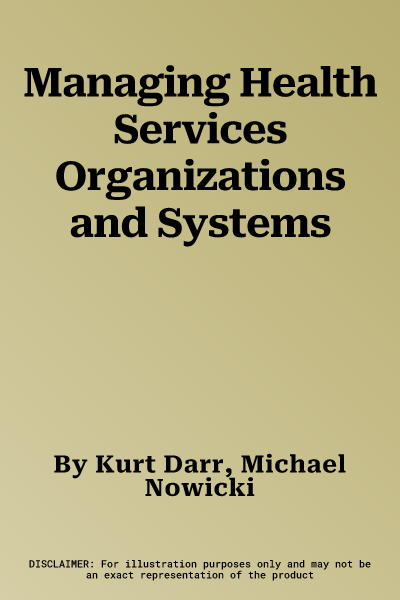Managing Health Services Organizations and Systems has served the
educational and professional needs of the healthcare field over four
decades. The seventh edition furthers that legacy in a completely
revised and reorganized text that presents a comprehensive range of the
knowledge and skills needed to effectively lead and manage health
services delivery.
The first of three parts describes the environment in which health
services are delivered. The second details tools and skills needed to
manage and lead health services. The final part links the preceding
chapters to Fayol's five management functions--planning, organizing,
staffing, directing, and controlling--as they apply in health services.
In this edition, the authors return to basics in a concise yet
substantive presentation within a context of quality and performance
improvement. New to this edition are chapters on healthcare economics,
financial management, planning, organizing, staffing, and directing. A
new section on compliance is key to meeting regulatory demands. The
sections on patient and staff safety, emergency preparedness, and
project management are updated and revised. Additional highlights
include
- Revised and supplemented end-of-chapter discussion questions
- 52 thought-provoking case studies, 28 new to this edition
- Extensive source citations, many with URLs leading to additional
sources for reading and research
- List of acronyms
- Detailed index
- Supporting instructor materials, including 58 additional case studies
Managing Health Services Organizations and Systems is a vital
resource for developing health services leaders and managers. It is
- A textbook for graduate and undergraduate courses in health services
management
- A resource for nonformal education such as seminars, webinars, and
self-instruction
- An enduring professional reference with encyclopedic information. Busy
practitioners will value the readily available acronym list, detailed
index, and regulatory and statutory references.
Faculty adopting this text will find exceptional support in the
accompanying instructor materials. These include learning objectives,
supplemental case studies, discussion questions and answers, PowerPoint
presentations, and test banks for each chapter. Also available are PDF
files of figures and tables.

